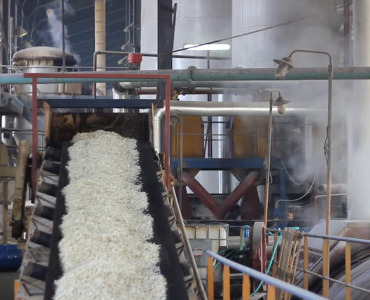Cost Effective Cane Sugar Processing Chemicals: Increase Performance
Cost Effective Cane Sugar Processing Chemicals: Increase Performance
Blog Article
Maximizar Rendimientos Y Minimizar Costos: Estrategias Avanzadas Para La Optimización Química Del Procesamiento De Azúcar De Caña
In the world of walking cane sugar processing, the quest of making the most of returns while simultaneously reducing costs stands as a formidable obstacle that calls for a tactical blend of innovative chemical optimization strategies. The intricacies of this venture dig right into the core of efficiency, where every aspect of the procedure plays a crucial role in accomplishing ideal end results. By exploring the ins and outs of chemical analysis, enzyme usage, pH control, purification, and distillation techniques, a landscape abundant with chances for enhancement and technology emerges. Among this detailed web of techniques exists the pledge of unlocking untapped potential and transforming the very significance of sugar manufacturing. Cane Sugar Processing Chemicals.
Chemical Evaluation for Effectiveness
Chemical evaluation plays a pivotal function in improving the efficiency of sugar walking cane handling by providing vital understandings right into the structure and residential or commercial properties of the raw products. By performing detailed chemical evaluations on sugar walking cane samples, cpus can figure out the exact focus of sucrose, sugar, fructose, and various other parts present in the raw product. This information is important for maximizing the numerous stages of the sugar cane processing chain, from milling to crystallization.
Additionally, chemical evaluation enables processors to determine pollutants such as organic acids, healthy proteins, and minerals that can affect the high quality and yield of the final sugar item. By evaluating these contaminations, processors can execute targeted techniques to eliminate or minimize their effects, inevitably boosting the total effectiveness of the processing plant.
In addition, chemical analysis helps with the monitoring of procedure criteria such as pH, temperature, and thickness, permitting cpus to make real-time changes to guarantee optimum conditions for sugar extraction and condensation. Overall, a detailed understanding of the chemical composition of sugar walking stick is vital for taking full advantage of yields, minimizing expenses, and maintaining high item quality in the sugar manufacturing market.

Enzyme Use for Boosted Yields
With a tactical technique to enzyme application, sugar cane processors can significantly improve their returns while preserving operational performance in the production process. Enzymes play a critical function in sugar cane handling by breaking down intricate carbohydrates into easier sugars, hence increasing the total sugar removal effectiveness. By including specific enzymes customized to target the various parts of sugar walking stick, such as cellulose and hemicellulose, processors can improve the release of sugars throughout extraction.
Enzyme usage supplies the benefit of making the most of sugar yields from the raw product while lessening the energy and sources needed for handling. Through careful selection and application of enzymes, sugar walking stick processors can optimize their operations to accomplish higher returns and earnings.
Ph Control for Optimum Handling
Enzyme usage for raised yields in sugar walking stick handling lays the foundation for resolving the important element of pH control for optimal processing effectiveness. Preserving the ideal pH level throughout different phases of sugar walking stick processing is important for taking full advantage of yields and reducing prices. pH control is especially crucial during the removal and information procedures. In the removal stage, maintaining the right pH aids in attaining reliable sucrose extraction from the walking cane. Managing the pH throughout explanation help in the rainfall of contaminations and non-sucrose components, resulting in a purer end product. Furthermore, pH influences the activity of enzymes involved in the breakdown of macromolecules, influencing the overall efficiency of the process. By meticulously keeping an eye on and readjusting the pH degrees at different handling steps, sugar walking cane processors can improve sugar recuperation rates, reduce chemical use, and optimize the total manufacturing process. Effective pH control not just enhances the quality of the end product but likewise adds to sustainable and economical sugar cane processing operations.
Advanced Filtration Strategies
Implementing advanced filtering methods in sugar cane handling boosts the performance and pureness of the last product through refined splitting up techniques. By including innovative filtration modern technologies, such as membrane layer purification and triggered carbon purification, sugar walking cane processing plants can achieve greater degrees of sugar healing and enhanced top quality other control.

Turned on carbon purification is an additional innovative strategy that assists in the removal of colorants, off-flavors, and residual pollutants from sugar cane products. By using activated carbon's adsorption homes, this purification method boosts the clearness and preference of the sugar, meeting the high criteria required by Home Page customers and industry laws.
Energy-Efficient Purification Methods
Energy-efficient purification approaches are important for maximizing the sugar walking stick handling market's energy consumption while preserving high-quality item requirements. Traditional purification processes can be energy-intensive, causing greater production expenses and environmental influences (Cane Sugar Processing Chemicals). Executing energy-efficient purification methods, such as vacuum cleaner distillation or molecular purification, can dramatically decrease energy needs while boosting general procedure efficiency
Vacuum cleaner distillation involves reducing the pressure within the distillation system, which reduces the boiling point of the fluid blend being refined. This reduction in boiling factor lowers the energy needed for evaporation, causing energy cost savings contrasted to standard purification methods.
On the various other hand, molecular purification uses brief path distillation methods under high vacuum problems to separate substances based upon their molecular weight. This method is particularly effective for heat-sensitive materials, as it operates at lower temperatures, reducing power usage and protecting item high quality.
Conclusion

Report this page